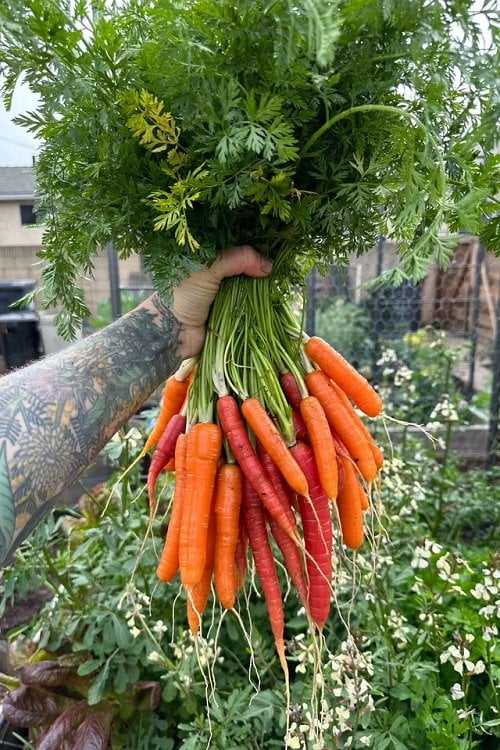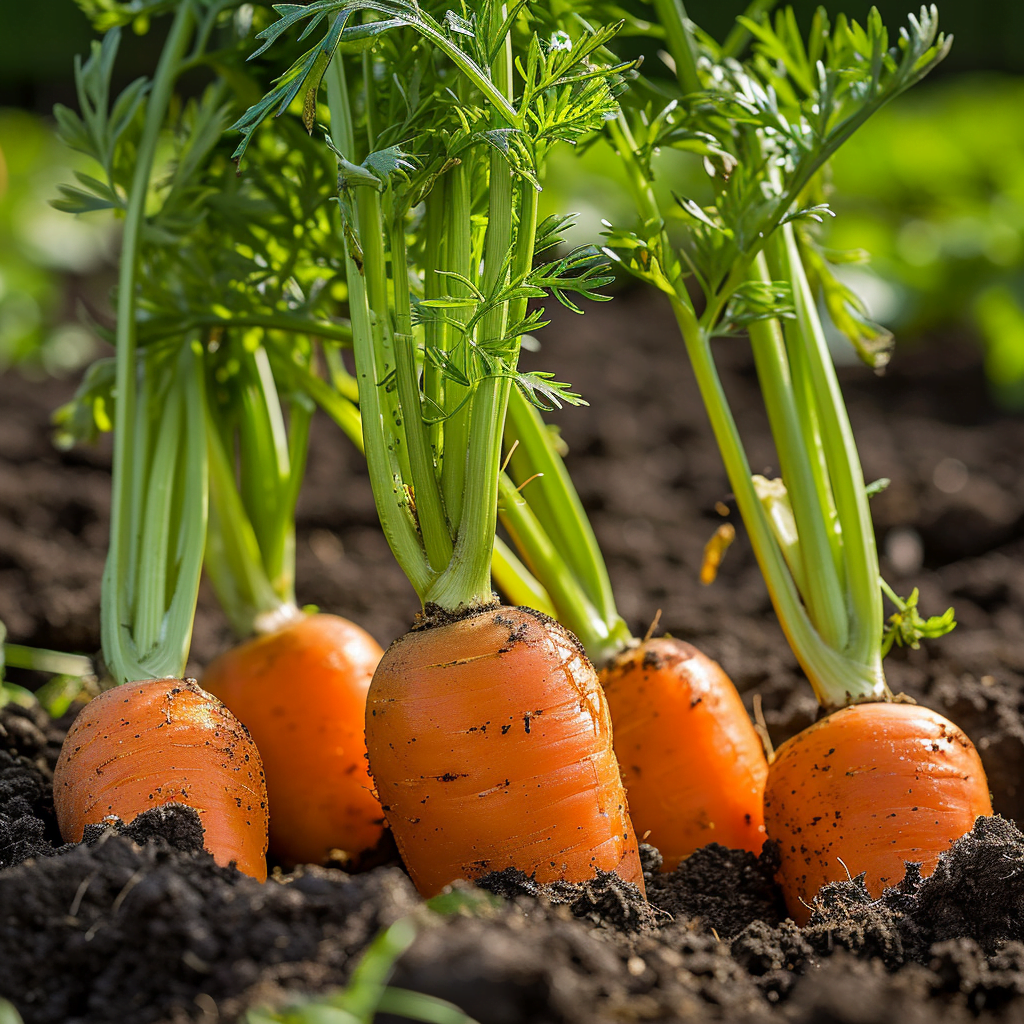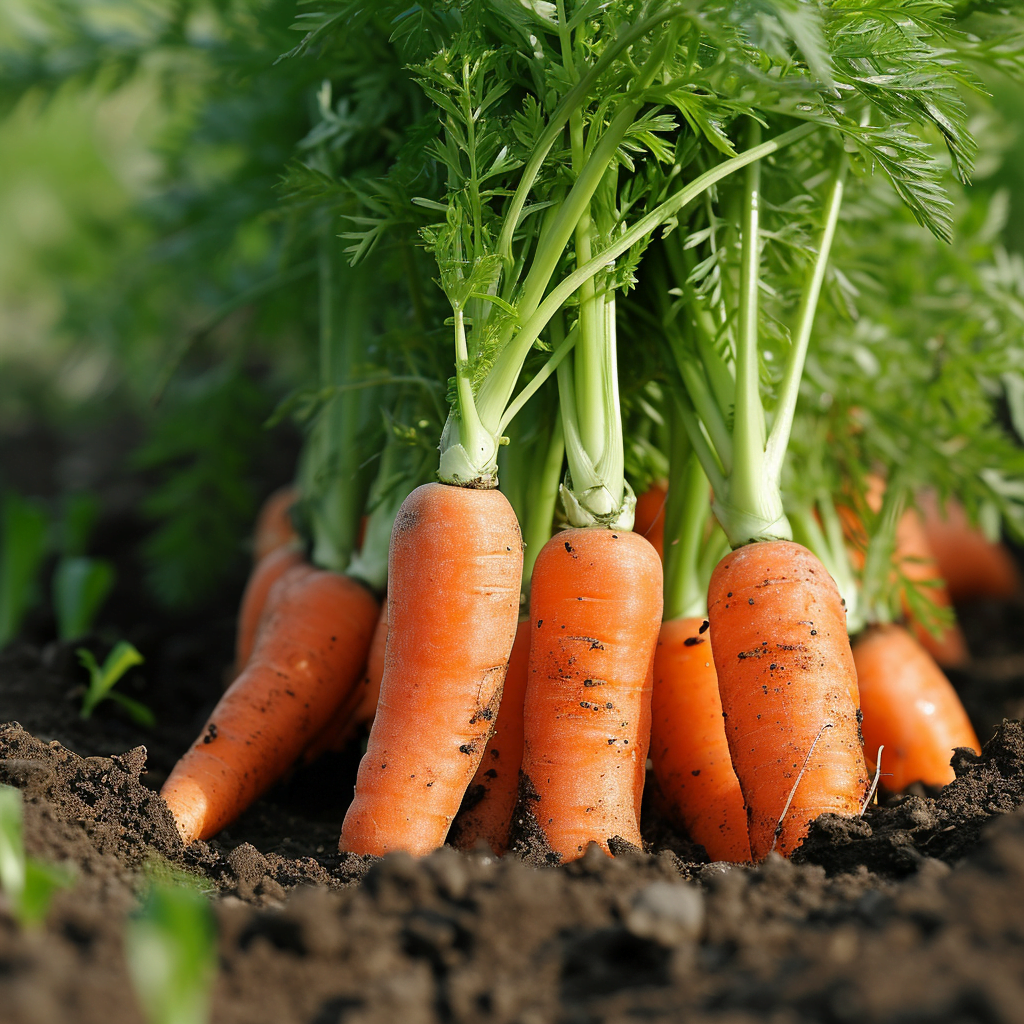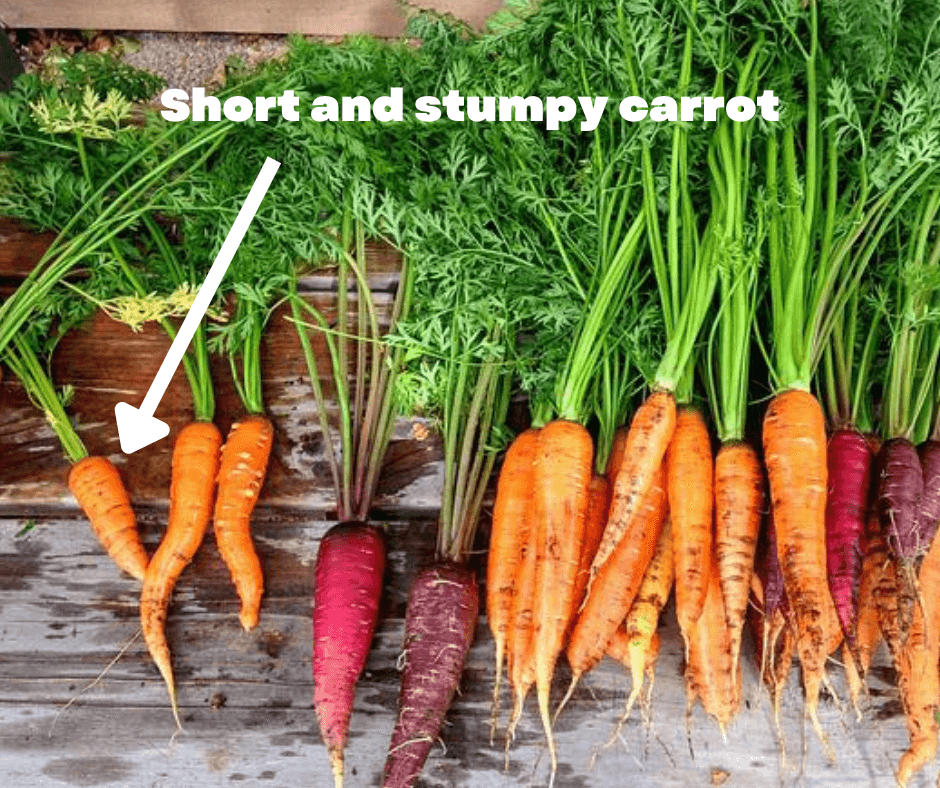So, you’re thinking about planting some carrots in the beautiful state of Georgia, huh? Well, you’ve come to the right place! If you’ve ever wondered When is the best time to Plant Carrots in Georgia, then look no further. In this article, we’re going to break down everything you need to know about the ideal planting time for carrots in the Peach State, so grab your gardening gloves and let’s get started!
Factors to Consider
Temperature
When planting carrots in Georgia, it is essential to consider the temperature. Carrots are cool-season crops, meaning they thrive in cooler temperatures rather than extreme heat. The ideal temperature range for growing carrots is between 60°F and 75°F. Planting carrots when the weather is too hot can result in poor germination and stunted growth. It is best to avoid planting during the scorching summer months and opt for spring or fall when the temperatures are cooler.
Soil Type
Another factor to consider when planting carrots in Georgia is the soil type. Carrots prefer loose, well-draining soil with a pH level between 5.8 and 7.0. Sandy loam or loamy soils are ideal for growing carrots as they allow for good root development and prevent issues such as rot or stunted growth. Before planting, it is important to prepare the soil by removing any rocks, weeds, or debris and loosening it to a depth of 12-15 inches.
Frost Dates
Knowing the frost dates in Georgia is crucial for successful carrot planting. Frost can damage or kill young carrot plants, so it is important to avoid planting too early in the spring or too late in the fall when frost is still a risk. In general, the last frost date in Georgia is around mid to late March, while the first frost date occurs in late October or early November. By planning your carrot planting around these frost dates, you can ensure that your crop has enough time to mature before the arrival of frost.

Planting Carrots in Spring
Preparing the Soil
To prepare the soil for planting carrots in the spring, start by removing any weeds, rocks, or debris from the garden bed. Loosen the soil to a depth of 12-15 inches using a garden fork or tiller. Adding organic matter such as compost or well-rotted manure can improve soil fertility and structure. Ensure that the soil is evenly moist but not overly wet before sowing the carrot seeds.
Sowing Carrot Seeds
When sowing carrot seeds in the spring, it is important to sow them directly into the ground rather than starting them indoors. Carrot seeds can take up to two weeks to germinate, so be patient. Create shallow furrows about half an inch deep and space them 2-3 inches apart. Place the seeds in the furrows, cover them lightly with soil, and water gently.
Watering and Mulching
After sowing the carrot seeds, it is crucial to provide adequate moisture for germination. Carrot seeds require consistent moisture, so ensure the soil remains evenly moist throughout the germination process. Once the seedlings emerge, water deeply but less frequently, allowing the soil to dry slightly between waterings. To conserve moisture and suppress weed growth, apply a layer of organic mulch around the carrot plants, taking care not to smother the seedlings.
Thinning Seedlings
As the carrot seedlings start to grow, they will become crowded if not thinned out. Thinning is necessary to provide adequate space for the carrots to develop properly. Once the seedlings are a couple of inches tall, thin them to a spacing of 2-3 inches apart. Gently pull out the weaker seedlings, leaving only the healthiest ones to continue growing.
Fertilizing Carrots
Carrots are not heavy feeders, but they can benefit from a light application of fertilizer. Before planting, incorporate a balanced fertilizer into the soil to provide essential nutrients. Alternatively, side-dress the growing carrots with a nitrogen-rich fertilizer once they reach about half their final size. Avoid excessive fertilization, as it can lead to forked or misshapen carrots.
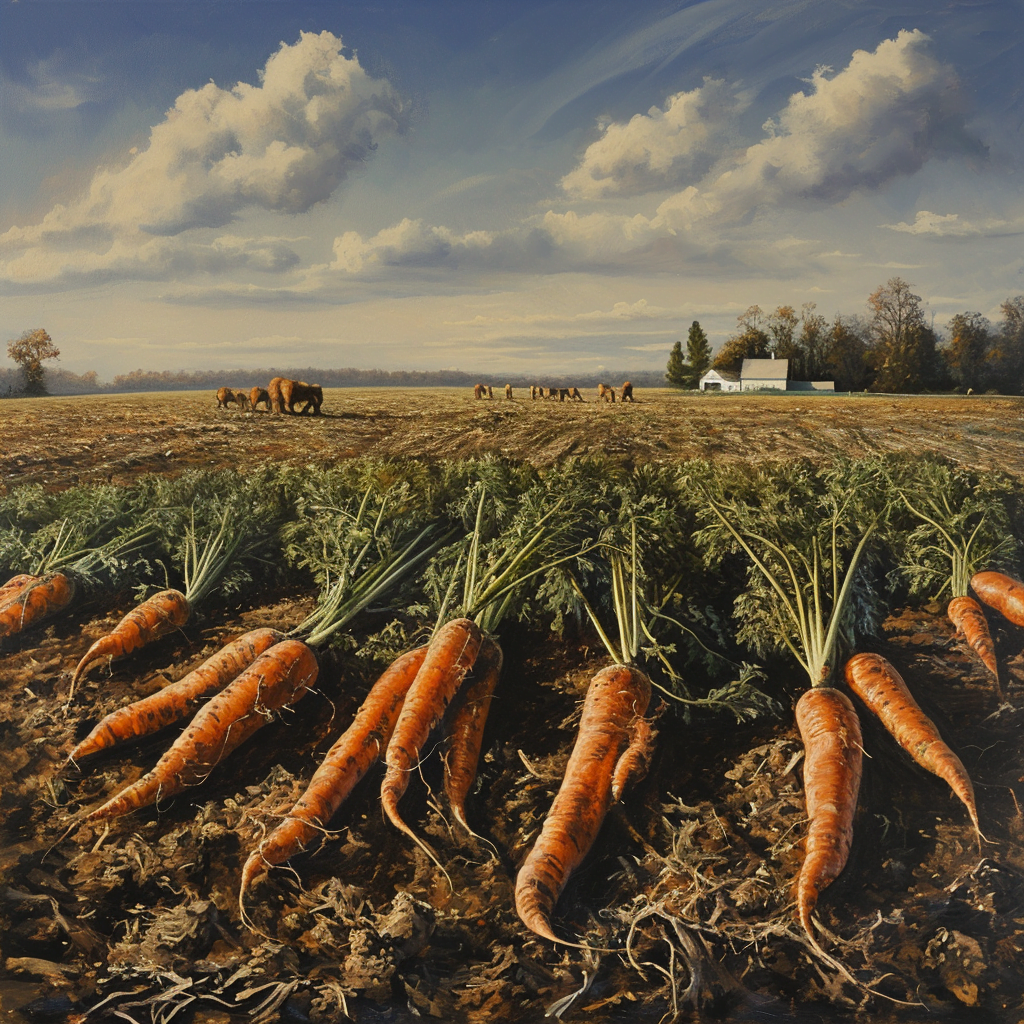
Planting Carrots in Summer
Protecting against Heat
Planting carrots in the summer can be challenging due to the high temperatures in Georgia. To protect the carrots from heat stress, choose a partially shaded location, such as under taller crops or near a fence that provides some shade during the hottest part of the day. Avoid planting in areas that receive full sun all day long, as the soil can quickly dry out and become too hot for the carrots to thrive.
Watering Carrots
Proper watering is crucial when growing carrots in the summer. The heat can cause the soil to dry out more quickly, so it is essential to provide adequate moisture. Water deeply and consistently, aiming for about one inch of water per week. Avoid overhead watering to prevent foliar diseases and instead focus on watering the soil directly at the base of the plants.
Using Shade Cloth or Mulch
To further protect the carrots from the intense summer heat, consider using shade cloth or mulch. Shade cloth can be placed over the carrot bed to provide additional shade and help regulate the temperature. Mulching with organic materials, such as straw or shredded leaves, can help retain soil moisture and keep the roots cooler. Apply a layer of mulch around the carrot plants, avoiding direct contact with the foliage.
Planting Carrots in Fall
Preparing the Soil
When planting carrots in the fall, start by preparing the soil in the same way as in the spring. Remove any weeds, rocks, or debris and loosen the soil to a depth of 12-15 inches. Adding organic matter such as compost or well-rotted manure can improve soil fertility and structure. Ensure that the soil is evenly moist but not overly wet before sowing the carrot seeds.
Sowing Carrot Seeds
Fall is an excellent time to sow carrot seeds in Georgia as the cooler temperatures are more favorable for germination and growth. Sow the seeds directly into the ground, creating shallow furrows about half an inch deep and spacing them 2-3 inches apart. Place the seeds in the furrows, cover them lightly with soil, and water gently. Maintain consistent moisture to aid in germination and early growth.
Protecting against Frost
As the fall season progresses, the risk of frost increases. To protect your carrot crop, consider using row covers or cloches to provide some insulation against frost. These covers can help trap heat and create a microclimate that protects the carrots from frost damage. Monitor the weather closely and cover the carrot bed whenever frost is expected.
Watering in Drier Seasons
Fall in Georgia is often drier than spring, so it is important to make sure the carrots receive enough water. Monitor the moisture levels in the soil and water deeply and less frequently, allowing the soil to dry slightly between waterings. Be cautious not to overwater, as overly wet soil can lead to rot and other root-related issues.
Best Carrot Varieties for Georgia
Scarlet Nantes
Scarlet Nantes is a popular carrot variety known for its sweet flavor and crisp texture. It grows well in Georgia’s climate and has a cylindrical shape with bright orange color. This variety is suitable for both fresh eating and cooking, making it a versatile option for gardeners.
Chantenay Red Core
Chantenay Red Core is a classic carrot variety that performs well in Georgia’s climate. It has a broad, tapered shape and a deep orange color. Chantenay carrots are known for their sweet, juicy flavor and are excellent for fresh eating or juicing.
Little Finger
Little Finger is a small, gourmet carrot variety that is perfect for growing in Georgia’s gardens. It is a quick-maturing variety, making it ideal for gardeners who want to harvest their carrots early. Little Finger carrots are slender, sweet, and have a bright orange color.
Bolero
Bolero is a high-quality carrot variety that thrives in Georgia’s climate. It has a smooth, cylindrical shape with a vibrant orange color. Bolero carrots have a sweet, crisp taste, and their strong tops make them easy to harvest.
Nelson
Nelson is a reliable carrot variety that performs well in Georgia’s conditions. It has a cylindrical shape and a deep orange color. Nelson carrots are known for their uniformity, smooth texture, and sweet flavor. They are great for fresh eating, cooking, or juicing.

Common Carrot Pests and Diseases in Georgia
Aphids
Aphids are common pests that can affect carrot plants in Georgia. These tiny, soft-bodied insects feed on the sap of the plants, causing stunted growth and distorted leaves. To control aphids, you can spray the affected plants with a strong jet of water to dislodge them or use insecticidal soap or neem oil.
Carrot Rust Fly
The carrot rust fly is a significant pest that can cause damage to carrot crops in Georgia. The adult flies lay their eggs near the base of the carrot plants, and the resulting larvae burrow into the roots, causing them to become discolored and rotten. To prevent infestations, use row covers to physically exclude the flies or rotate your carrot crops to different areas each year.
Root Knot Nematodes
Root knot nematodes are microscopic worms that can attack the roots of carrot plants, causing stunted growth and deformed roots. To manage nematode infestations, consider planting nematode-resistant carrot varieties or practicing crop rotation with non-host plants.
Leaf Blight
Leaf blight is a fungal disease that can affect carrot plants, causing leaf spots, yellowing, and eventual defoliation. To prevent leaf blight, ensure proper spacing between plants to promote air circulation, avoid overhead watering, and remove any infected leaves promptly. Fungicidal sprays may be necessary in severe cases.
Alternaria Leaf Spot
Alternaria leaf spot is another fungal disease that can affect carrot plants in Georgia. It causes small, circular spots on the leaves, which can eventually enlarge and turn tan or brown. To prevent alternaria leaf spot, practice crop rotation, avoid overcrowding, and remove any infected foliage.
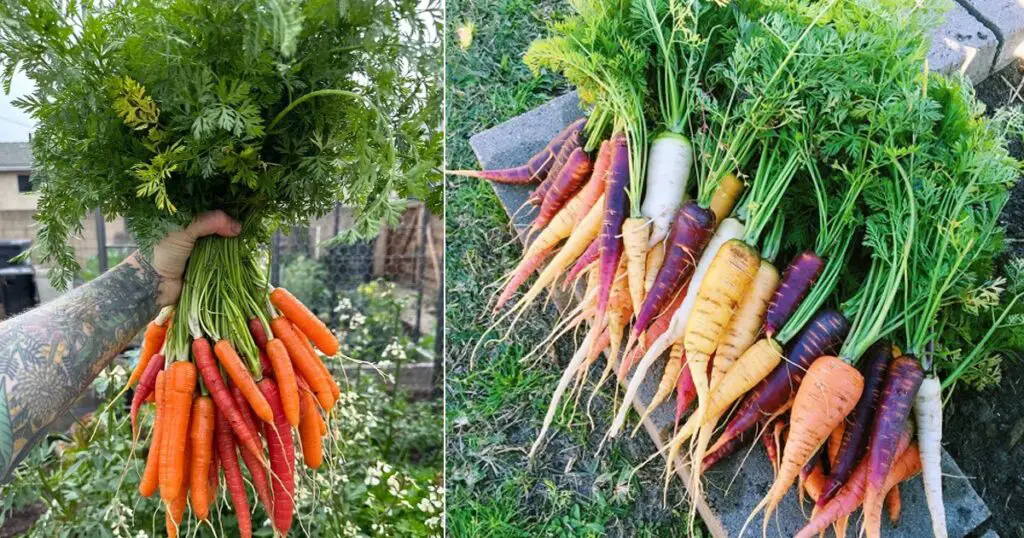
Harvesting Carrots in Georgia
Determining When Carrots Are Ready
Carrots are usually ready for harvest about 60-80 days after sowing, depending on the variety. The best way to determine if your carrots are ready is to gently brush away the soil around the top of the carrot and check its size and color. Mature carrots should have a bright orange color and a firm, crisp texture. Small carrots can be harvested for baby carrots, while larger ones can be left in the ground for a bit longer.
Gently Harvesting Carrots
When harvesting carrots, it is important to handle them with care to avoid breaking or damaging the roots. Use a garden fork or trowel to loosen the soil around the carrots, taking care not to pierce or cut into them. Gently lift the carrots out of the ground, holding them by the foliage or just above the root crown. Avoid twisting or yanking the carrots, as this can cause them to break.
Storing Carrots
After harvesting, remove any excess dirt from the carrots by gently brushing or rinsing them. Remove the foliage, leaving about an inch of the stem intact. Store the carrots in a cool, dark place with high humidity, such as a root cellar or refrigerator. Carrots can be stored in a perforated plastic bag or wrapped in damp paper towels to retain moisture. Properly stored carrots can last for several weeks to months, depending on the variety.
Conclusion
Planting carrots in Georgia requires consideration of factors such as temperature, soil type, and frost dates. By understanding the specific needs of carrot plants throughout different seasons, gardeners can cultivate a successful crop. Whether planting in spring, summer, or fall, providing proper soil preparation, watering, and protection against pests and diseases are key to growing healthy carrots. With the right carrot varieties and knowledge of harvesting and storage techniques, Georgia gardeners can enjoy a bountiful harvest of delicious carrots all year round.
